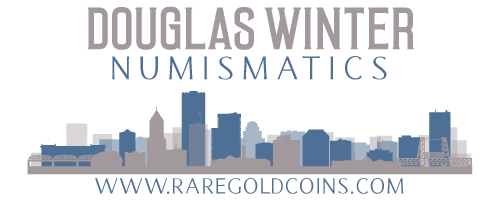Dahlonega Gold Quiz
/I'm busy updating my Dahlonega gold book (I hope to be finished with the manuscript in 45 days or so) and in honor of My Dahlonega Obsession, I thought it would be fun, or at least moderately amusing, to share some of my recent findings in the form of a Dahlonega Quiz. Here's how I would interpret your score on the quiz, should you decide to play along:
10 of 10: You are A Dahlonega Guru. Consider becoming a full-time specialist in this area; if you aren't already.
7/8/9 of 10: You are pretty good. Maybe not a Guru but you know your coins.
6 of 10 or below: You are a Dahlona-newb. You need to buy the upcoming third edition of my book, read it carefully, and then read it some more.
OK, are you totally excited and ready to take the quiz? Here we go!
1. What is the most common Dahlonega gold coin in terms of the total number known?
a) 1849-D gold dollar b) 1852-D quarter eagle c) 1854-D half eagle d) 1861-D eagle
2. What Dahlonega gold coin has the most known individual coins in Gem condition (i.e., MS65 and above?)
a) 1858-D gold dollar b) 1847-D quarter eagle c) 1855-D quarter eagle d) 1854-D half eagle
3. Which Dahlonega quarter eagle has an odd grade distribution where more survivors are high grade (AU55 and above) than low grade (EF40 and below)?
a) 1839-D b) 1843-D c) 1857-D d) All the above
4. What Dahlonega coin has the lowest mintage? (And you get extra credit if you know the mintage figure?)
a) 1854-D three dollar b) 1856-D quarter eagle c) 1854-D quarter eagle d) 1841-D quarter dollar
5. What is the rarest Dahlonega coin in terms of overall rarity (i.e., fewest known in all grades combined?
a) 1861-D gold dollar b) 1854-D three dollar c) 1840-D quarter eagle d) 1856-D quarter eagle
6. What is the rarest Dahlonega coin in Uncirculated? (Not the number graded by the services but the number of coins that specialists agree are really, truly "new?")
a) 1859-D gold dollar b) 1840-D quarter eagle c) 1856-D half eagle d) 1842-D Large Date half eagle
7. Which of the following is not a recognized Dahlonega variety?
a) 1842-D Small Date half eagle b) 1843-D Small Mintmark quarter eagle c) 1859/8-D gold dollar d) 1846-D/D quarter eagle
8. Which Dahlonega coin is known to have been produced exclusively by the Confederacy?
a) 1860-D half eagle b) 1861-D gold dollar c) 1861-D half eagle d) 1861-D three dollar
9. What coin holds the all-time auction record for a Dahlonega mint product? (Extra credit if you can name the sale and amount. A lot of extra credit, in fact....)
a) 1838-D half eagle b) 1861-D gold dollar c) 1861-D half eagle d) 1854-D three dollar
10. What collection of Dahlonega gold coinage, sold by Heritage in April 2006, contained many finest-knowns and set many price records?
a) Black and Gold b) Green Pond c) Ashland City d) Duke's Creek
11. Extra Credit: Name every one-year type of Dahlonega coin
So, did that frazzle you or did you find it fun? Here are the answers to the Dahlonega Quiz.
1= A. The 1849-D dollar is easily the most common coin made at the Dahlonega mint. There are as many as 750-1000 known and it is readily available in all grades.
2= A and B. Both of these are acceptable as correct answers. There are at least three Gem 1858-D gold dollars known. There are two or possibly three 1847-D quarter eagles known in Gem.
3= C. There is speculation that a hoard of 1857-D quarter eagles may have existed at one time. This date is almost never seen in lower grades but tends to be available in the AU50 to MS61 range.
4= B. The 1856-D has a mintage of just 874, which is the lowest of any issue from this mint and the only D mint coin with fewer than 1,000 made.
5= D. Again, the correct answer is the 1856-D.
6= D. This is a tough one but most specialists agree that the 1842-D Large Date half eagle is unknown in strict Uncirculated. The same could be said for the 1856-D quarter eagle but I'm tired of giving props to this date...
7= C. There is no such thing as an overdated Dahlonega coin. Of any date. Or denomination.
8= B. If you chose "D" and thought it was the 1861-D Three Dollar, you immediately fail this quiz and aren't allowed to buy any Dahlonega coins until you study my book!
9= C. Heritage 1/08: 3198, graded MS63 by PCGS, sold for a record-braking $207,000. When I sold the coin a number of years earlier, it was the first Dahloenga coin to have ever cracked the $100,000 mark.
10= D. The Duke's Creek collection of gold dollars and quarter eagles was sold in April 2006. The half eagles have yet to hit the market.
11= The one year types are 1855-D gold dollar, 1839-D quarter eagle, 1854-D three dollar, 1838-D half eagle and 1839-D half eagle.
So how did you do on the quiz? You can email me your result and comments at dwn@ont.com


















